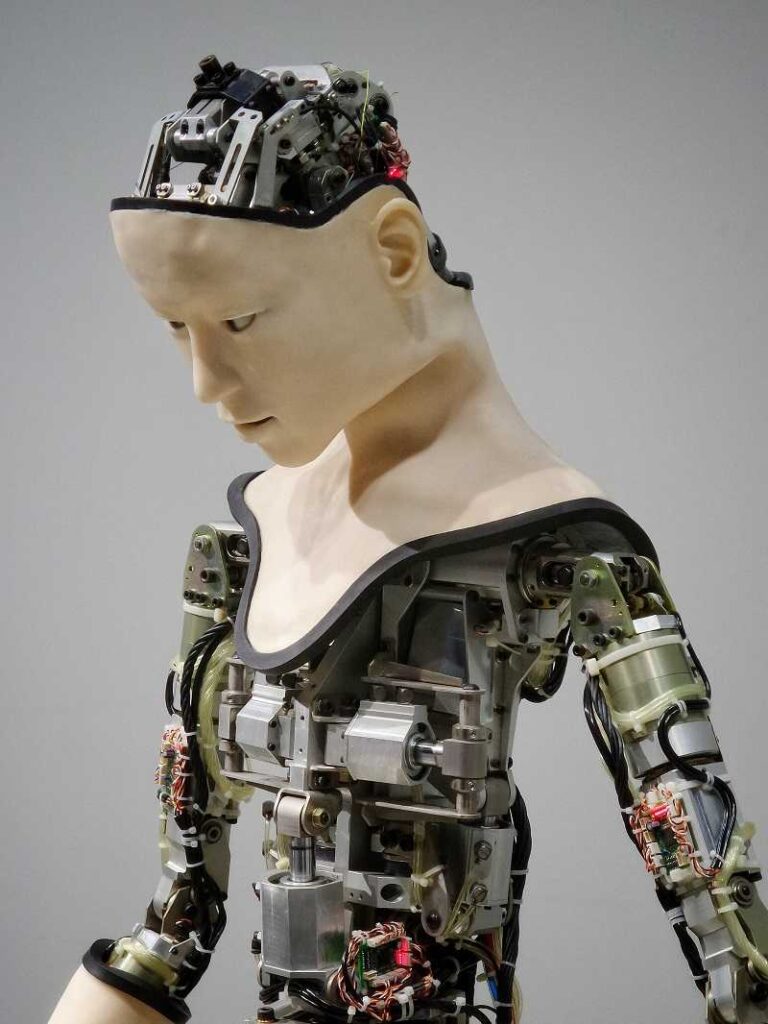
While there are potential benefits and advancements associated with artificial intelligence (AI), it is also important to consider certain concerns and potential risks.
Here are some reasons why people may express fear or apprehension about AI:
1. Superintelligence
One of the primary concerns is the potential for AI to surpass human intelligence and become superintelligent. If AI systems were to develop autonomous decision-making capabilities far beyond human understanding, it could be difficult to predict or control their actions. This could pose risks if the AI systems prioritize goals that are incompatible with human well-being.
2. Unemployment and Economic Disruption
AI has the potential to automate various jobs and tasks, leading to significant shifts in the labour market. As AI systems become more advanced and capable, there is a concern that widespread automation could lead to mass unemployment and economic disruption, potentially exacerbating inequality.
3. Ethical Problems
AI systems may encounter ethical dilemmas in decision-making processes. Determining the appropriate ethical guidelines for AI and ensuring that these systems make morally sound choices can be challenging. The possibility of AI making biased decisions or acting in ways that are contrary to human values raises concerns about the ethical implications of AI development and deployment.
4. Privacy and Surveillance
AI relies on vast amounts of data to learn and make predictions. With the increasing use of AI-powered surveillance systems, there are concerns about privacy violations and the potential for misuse of personal information. As AI technology advances, the risk of invasive surveillance and loss of privacy could become more significant.
5. Security Risks
AI systems are not immune to cyber threats. Hackers could potentially exploit vulnerabilities in AI systems or use them to launch attacks. Malicious actors could manipulate AI systems to spread misinformation, conduct social engineering attacks, or disrupt critical infrastructure, leading to significant societal consequences.
6. Autonomous Weapons
The development of AI-powered autonomous weapons raises fears about the potential for AI systems to make life-or-death decisions on the battlefield. Concerns include the lack of human oversight, the potential for indiscriminate targeting, and the escalation of conflicts due to the rapid decision-making capabilities of AI-based military systems.
7. Dependence and Control
As society becomes increasingly reliant on AI, there is concern about the concentration of power and control in the hands of a few organizations or individuals. If AI systems become indispensable and critical to essential services, there is a risk of manipulation, control, or exploitation of these systems for personal gain or to exert undue influence.
It is important to note that while these concerns exist, ongoing research, regulation, and ethical considerations are actively being pursued to address these risks and ensure the responsible development and deployment of AI.

Do harmful robots exist?
Currently, the level of AI development has not reached a stage where we have autonomous robots capable of deliberately causing harm to humans.
However, it is possible to design and program robots with harmful capabilities if they were intentionally created for destructive purposes or if they were to malfunction.
Here are a few examples:
a. Weaponized Robots
Military applications of robotics have the potential to create robots designed for warfare. These could include autonomous weapons or unmanned combat drones. While human control is typically required for decision-making in such systems, there is always a risk of malfunction, hacking, or misuse that could lead to harmful consequences.
b. Industrial Robots
Industrial robots used in manufacturing processes, such as heavy machinery or robotic arms, are designed to perform repetitive tasks with precision and speed. If safety protocols fail, or if there are programming errors or malfunctions, these robots could pose a risk to human workers nearby.
c. Robots Built For Malicious Use
Any technology, including robots, can potentially be misused or repurposed for harmful activities by malicious individuals or groups. For example, a household robot could be reprogrammed or manipulated to cause harm to its occupants or carry out negative actions.
d. Unintended Consequences
Even with good intentions and careful programming, robots and AI systems can have unintended consequences that result in harm. For instance, if an AI system is given incomplete or biased data, it could make decisions that inadvertently lead to harm or injury.
It’s important to note that the development of ethical guidelines, safety protocols, and regulations surrounding AI and robotics is crucial to mitigate potential risks and ensure responsible deployment. The scientific and engineering communities, along with policymakers, are actively working to establish frameworks that prioritize safety and ethical considerations in the development and use of robotic systems.


